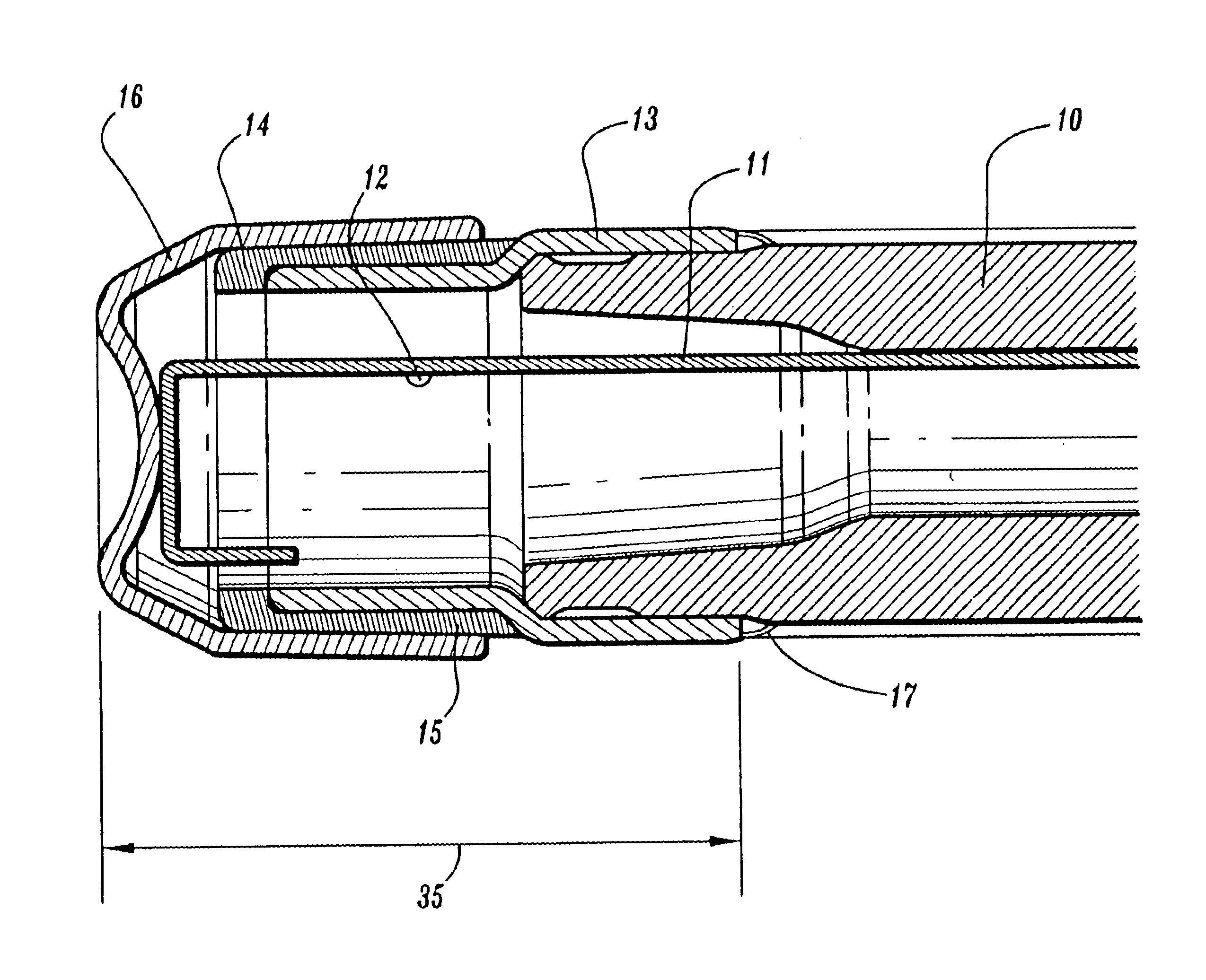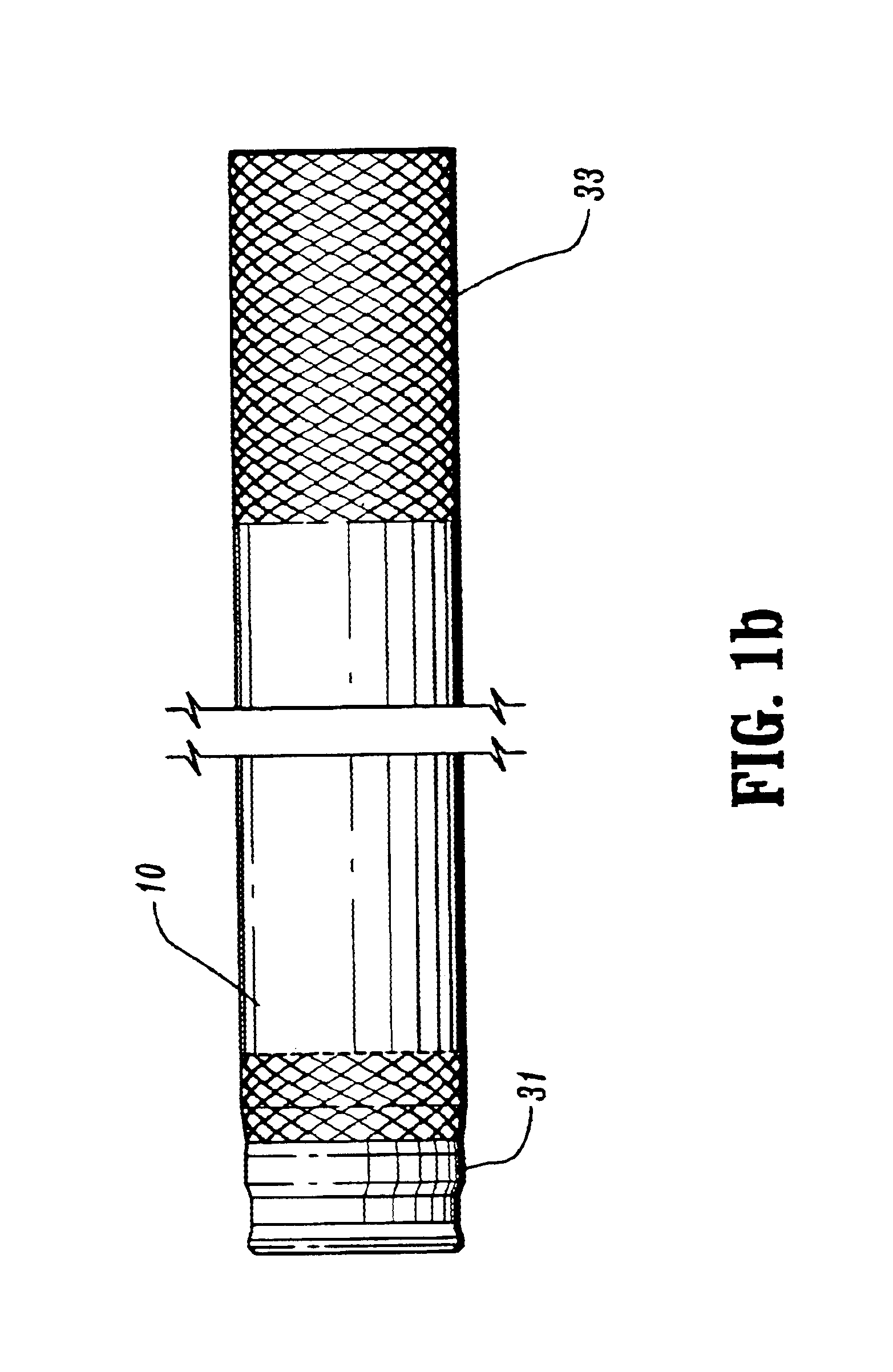Probe tip thermal isolation and fast prediction algorithm
a technology of thermal isolation and prediction algorithm, applied in the field of electronic thermometers, can solve problems such as slow or inaccurate temperature readings, and achieve the effects of reducing many of these inaccuracies, reducing response time, and optimizing feedback algorithm
- Summary
- Abstract
- Description
- Claims
- Application Information
AI Technical Summary
Benefits of technology
Problems solved by technology
Method used
Image
Examples
Embodiment Construction
With reference now to the drawings and particularly to FIGS. 1A, 1B, 1C, 2A and 2B, an electronic thermometer is shown configured according to at least one embodiment of the present invention. A probe shaft 10 is shown having a distal end 31 and a proximate end 33 and having a separator 13 disposed on its distal end. In an exemplary embodiment the probe shaft 10 is made from CELCON M90 available from Adam Spence Corporation. Celcon is an acetal that was selected for toughness and notch resistance. Celcon has the additional advantage for the probe shaft material because it can also be extruded. The separator 13 is made from 3033-H14 aluminum. The aluminum material was selected for the separator because aluminum is best suited for the separator fabrication stamping operation. A heater element 12 is in contact with the separator 13 and provides heat thereto. In an exemplary embodiment, the heater element is a 100 ohm, ⅙ watt 1% 0603 SMD resistor. Many resistor configurations will work ...
PUM
| Property | Measurement | Unit |
|---|---|---|
| temperature | aaaaa | aaaaa |
| length | aaaaa | aaaaa |
| temperature | aaaaa | aaaaa |
Abstract
Description
Claims
Application Information
 Login to View More
Login to View More - R&D
- Intellectual Property
- Life Sciences
- Materials
- Tech Scout
- Unparalleled Data Quality
- Higher Quality Content
- 60% Fewer Hallucinations
Browse by: Latest US Patents, China's latest patents, Technical Efficacy Thesaurus, Application Domain, Technology Topic, Popular Technical Reports.
© 2025 PatSnap. All rights reserved.Legal|Privacy policy|Modern Slavery Act Transparency Statement|Sitemap|About US| Contact US: help@patsnap.com



